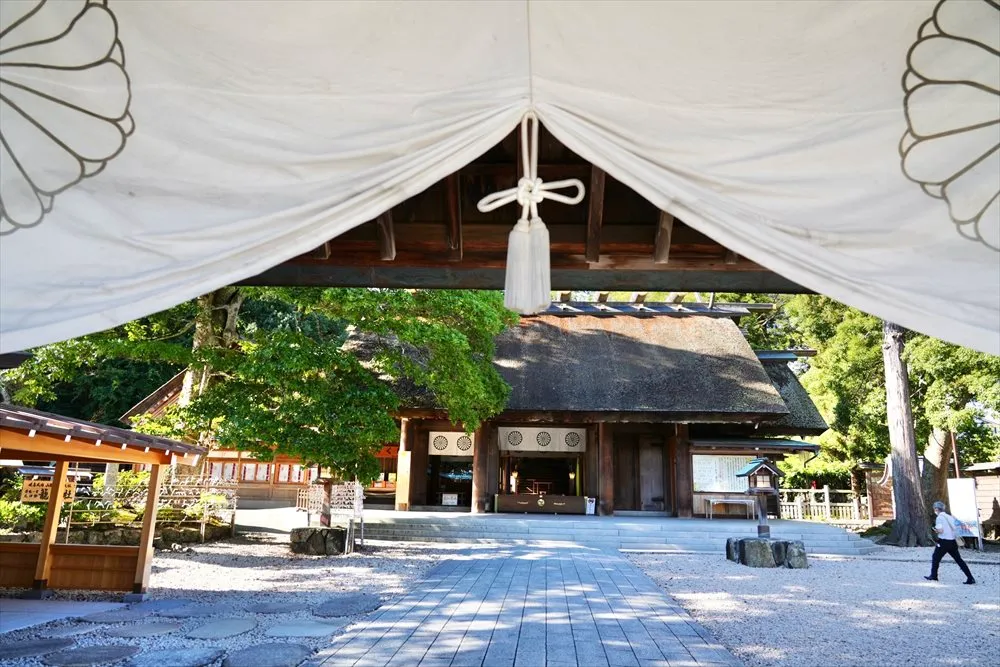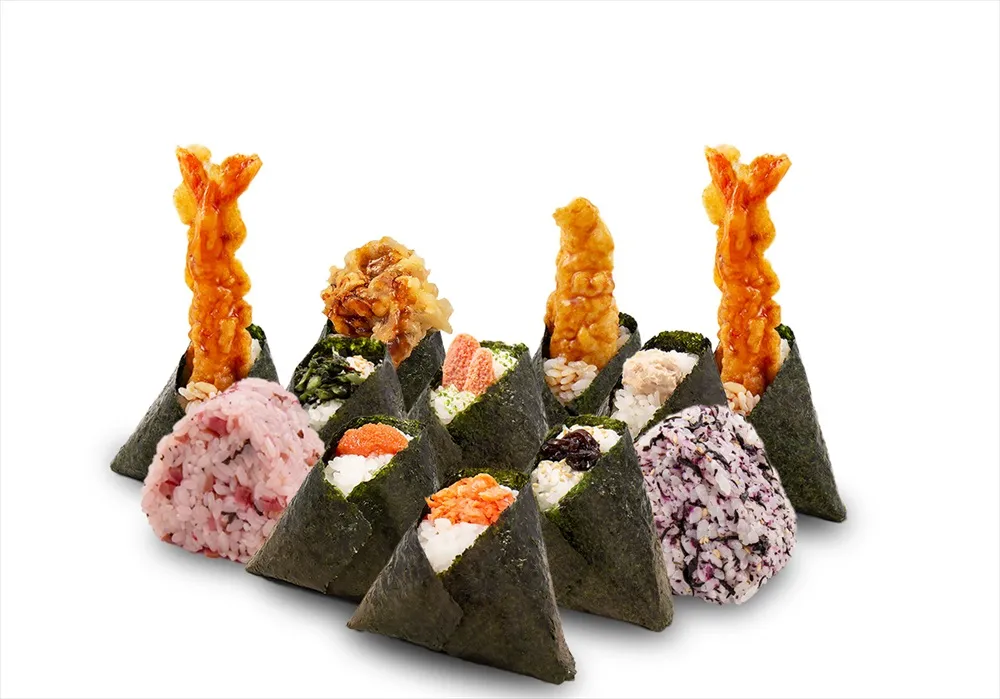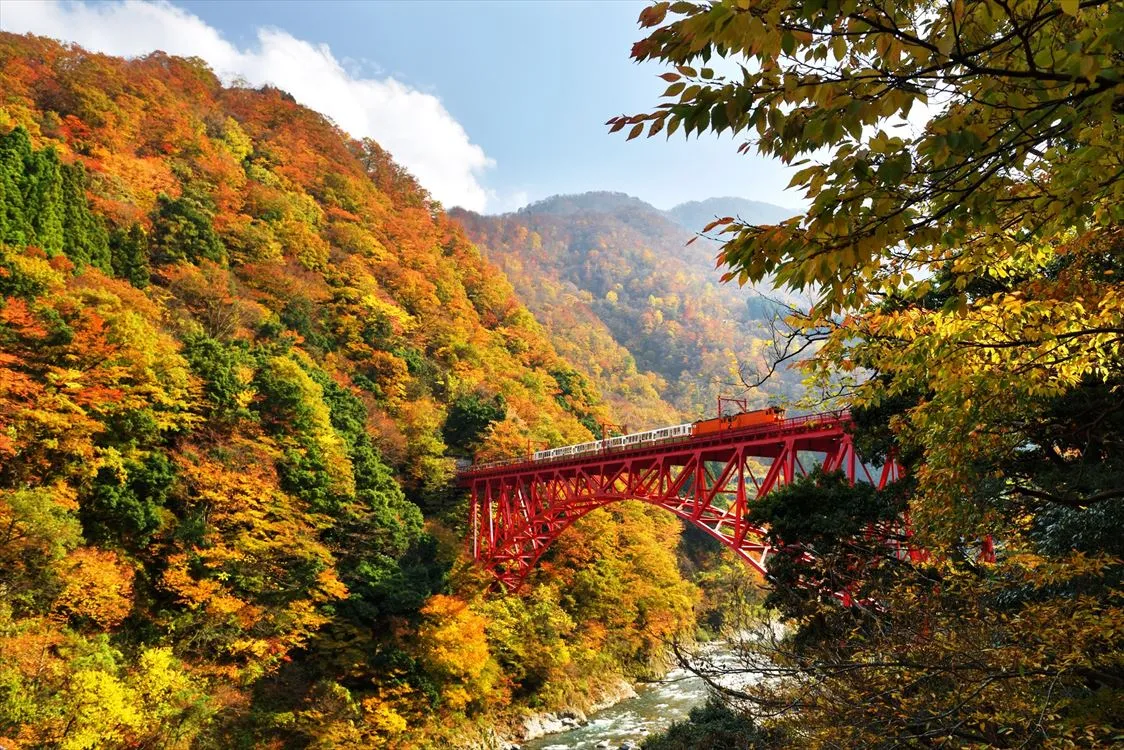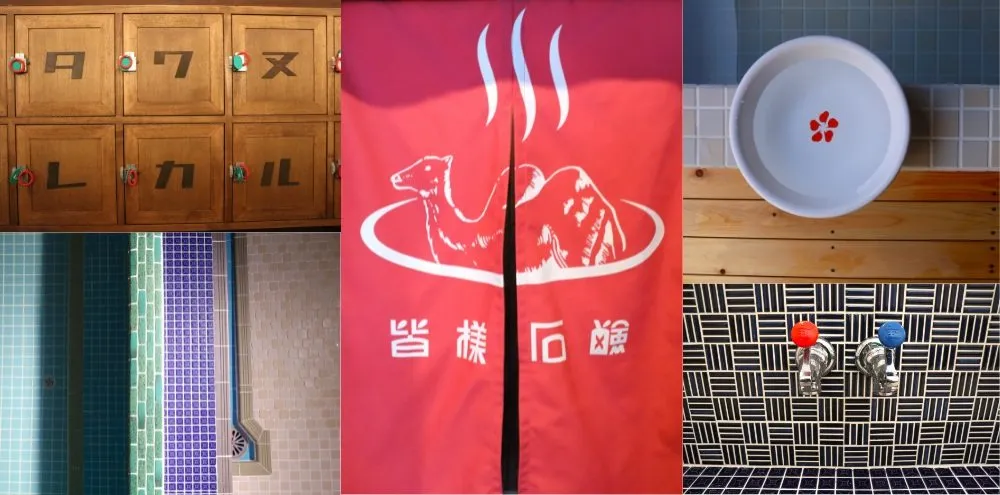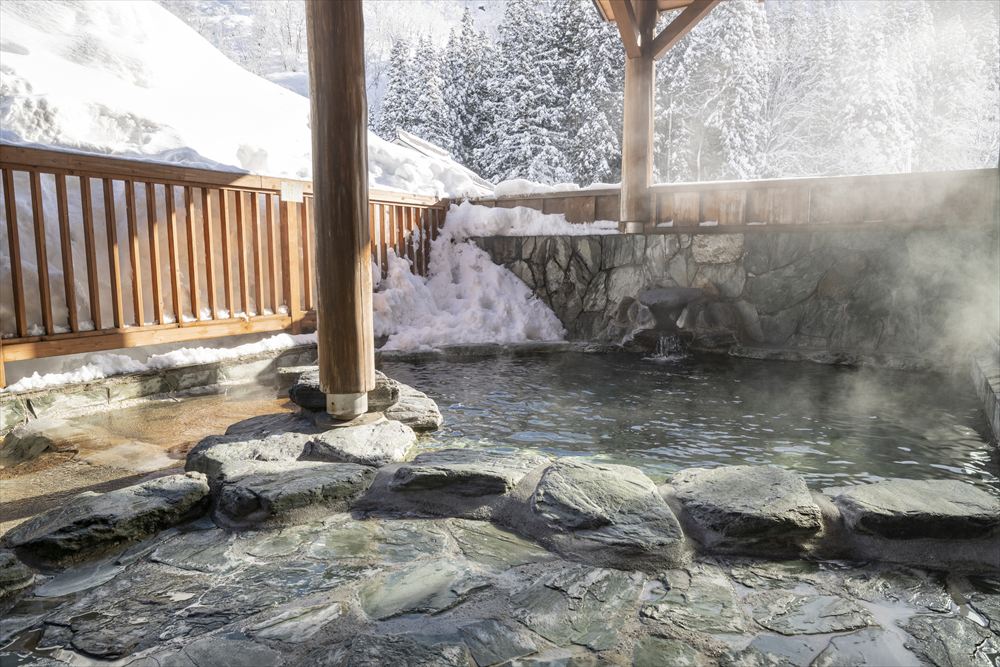The Hokuriku area including Echizen, Fukui Prefecture, and Kaga, Ishikawa Prefecture, faces to the Sea of Japan and is blessed with picturesque scenery. We att.JAPAN in this issue feature sightseeing spots, traditional crafts, delicious dishes and onsen in Echizen and Kaga.
ECHIZEN / KAGA
ECHIZEN / KAGA

Eihei-ji Temple is the head temple of the Buddhist Soto sect and has 15,000 branch temples all over the country. Zen priest Dogen established Eiehi-ji in 1244. Large and small buildings stand in the about 330,000 square meter precincts, surrounded by 700-year-old sugi cedar trees. Even now, more than 100 people seek to enter the temple for training every year and those accepted are engaged in hard training. Zen teaches that the Buddhist law is revealed in the everyday manners of a person. Thus, all activities including eating, cleaning, bathing and face-washing are important in addition to the practice of zazen. Especially, cleaning is a very important training because it purifies one both externally and internally from both physical and spiritual dust. Ascetic monks clean the floors of each building with a damp rag with their bare hands and feet. You can personally experience the practice of zazen (reservations are required). In front of the temple, there are ryokan, restaurants which serve shojin vegetable cuisine and Eihei-ji soba, shops selling sesame tofu, and souvenir shops.?
Echizen has long been known for Echizen Washi (Japanese paper manufactured in Fukui), which has a 1,500-year history. The Fukui domain issued the first paper money circulated in local administrations in 1666. It was made with Echizen Washi and it is said to be the oldest paper money still in existence in Japan. Echizen developed as a production area of high quality paper and its production volume of hand-made paper is still the largest in Japan. Although the paper is beautiful and has a soft texture, it is strong and it is said to last for even a 1,000 years. At Echizen Washi no Sato you can try your hand at making Japanese paper.
As Echizen has heavy snow during winter, it is blessed with sturdy bamboos which withstand the tough cold. Using these bamboos, local people have made baskets, flower vases and other everyday household goods. After WWII, they started to make bamboo dolls from left-over bamboos after making the more traditional products. Now the bamboo dolls are a new local specialty. At Echizen Takeningyo no Sato you can visit ateliers and also can experience making bamboo dolls.
Echizen uchi-hamono cutlery is known for its casting technique. Heated steel is strongly and repeatedly beaten many times to forge a knife. (“Uchi” means “beat” or “strike” and “hamono” means “edged tool.”) This technique has been passed down for 700 years. Cutting-edge design knives produced with this technique were selected as a MoMA (Museum of Modern Art, New York) permanent collection. At Takefu Knife Village you can see old-style blacksmiths working and also experience making a letter opener. Please see an animated video on our website (www.att-japan.net).
Tojinbo Cliffs / Awara Onsen
Tojinbo, a series of steep cliffs along a 1-km coastline, is one of the weirdest sites in Japan. Gigantic rock pillars tower like forbidding walls ? or monsters. You will surely freeze when you look down at the sea from a 25-meter high cliff. The landscape of this type of rock formation is geologically rare and can be seen at only three places in the world. Sightseeing boats are enjoyable and sunset over the edge of the horizon is a must-see. In wintertime, you can see “wave flowers”; on extremely cold and windy days, waves breaking on the rocks become like soap bubbles and the bubbles drift in the air on the cold wind currents.?
To the south of Tojinbo, there is fishing port Mikuni, a port famous for catching of Echizen-gani crab, sweet shrimp and buri (yellow tail). Awara Onsen is nearby. With a history dating back to 1883, it is a relatively new hot spring town, but is known as one of the largest hot spring towns in the Hokuriku area and has been a favored spot of literary figures.

Ono / Katsuyama
Ono is called “Little Kyoto” in Hokuriku because of not only its atmosphere but also its neat grid streets like Kyoto, which were made by Kanamori Nagachika, the first lord of Echizen-Ono Castle. Reconstructed Echizen-Ono Castle, historic sites and buildings, retro shops and beautiful springs are worth seeing and you can tour on foot.
More than 80 percent of dinosaur fossils in Japan have been found around Katsuyama, and Japan’s first dinosaur museum opened there in 2000. It displays replicas and skeletal preparations of dinosaurs. You can enjoy “discovering” fossils at a square. Rocks of the sites where dinosaur fossils were actually found are placed there.
Kaga Onsen-kyo
There are four famous and time-honored spas in Kaga Onsen-kyo.
①Katayamazu Onsen
Located near Lake Shibayama-gata, Katayamazu Onsen has modern spa hotels and the resort atmosphere leaves nothing to be desired. Meanwhile, sounds of drums and shamisen played by geigi (geisha) can be heard in the back streets. The hot spring was discovered some 350 years ago, but the spa town was not built until 1882. Since then, the town has developed as a spa resort.
Nearby Nihon Genki Gekijo is a theater-style entertainment park opened in July 2009. In the reproduced traditional town, all people from children to adults can enjoy comedy shows staged by Yoshimoto, a famous entertainment company in Osaka, various other shows, and throwing shuriken knives.
②Awazu Onsen
Awazu Onsen is the oldest spa town in Kaga Onsen-kyo, established in 718 AD. High priest Taicho, the first person to stand on the top of sacred Mount Hakusan, found the spa. Ryokan Hoshi was built in the same year and is listed in the Guinness Book of World Records as the oldest accommodation in the world. The current owner is the 46th generation.
At Yunokuni no Mori, you can experience making Japanese paper or soba buckwheat noodles, and applying gold leaf. Making dorayaki, a Japanese sweet consisting of two small pancake-like patties wrapped around a filling of sweet red bean paste, is a popular attraction, too.
③Yamashiro Onsen
Yamashiro Onsen is located on the foot of the hill. Its origin dates back to over 1,300 years ago when monk Gyoki, who established Yakuoin Onsen-ji Temple, discovered the spa. A number of poets and artists have visited and stayed there: haiku poet Matsuo Basho; Kitaoji Rosanjin, who is renowned as an artist and cook; and Yamashita Kiyoshi, who is known as a wandering painter. The center of the town is a large public bath called Soyu and venerable ryokan are gathered around it. Hot spring water gushes forth at Gensen Park. You can enjoy drinking the water as well having a foot bath.?
④Yamanaka Onsen
Yamanaka Onsen spa town is located along the Daishoji-gawa River in the mountain, surrounded by beautiful scenery. It is said that this spa was found by monk Gyoki 1,300 years ago. Along with the spa, the local Yamanaka lacquerware is well known throughout Japan. Enjoy walking in Kakusen-kei Valley, a picturesque valley that Matsuo Basho was much impressed with.
Foot of Mount Hakusan
Mount Hakusan is one of the Three Most Notable Mountains in Japan along with Mount Fuji, Shizuoka and Yamanashi prefectures, and Tateyama, Toyama prefecture. It has three peaks: 2,702 meter Gozenho in the center, and Onanjiho and Tsurugamine. It is also known as a sacred mountain. Its virgin beech forests are full of wild animals, including black bears, Japanese monkeys, and Japanese serows. In the sky, 150 kinds of wild birds like golden eagles and accentors fly. The mountain is also famous for its alpine plants.
Hakusanhime Shrine is located in Tsurugi town at the foot of the mountain. Known as the leading shrine in Kaga, it is the head shrine of Hakuksan Shrine, which has 3,000 branch shrines across the country. This area is one of the heaviest snowfall areas in Japan, and it experiences several meters of snow in winter. With abundant nature ? sometimes severe ? this area is good for outdoor leisure activities such as bird watching, hiking, camping and skiing.
For more information
http://www.ishikawa-kaga-hakusan.jp/
Kanazawa
Kanazawa is an old town sandwiched between the Sai-gawa and Asano-gawa rivers. It is the center of the Kaga area. In 1583, Maeda Toshiie moved into Kanazawa Castle as the lord of Kaga domain. From the time of the Edo government’s establishment in 1603, the Maeda family encouraged development of art and culture, so Kanazawa flourished as a castle town of the affluent Kaga domain. Kanazawa is still renowned as a town home to traditional crafts including Kutani-yaki porcelain ware and Kaga Yuzen dyeing and other traditional arts and crafts.
Sightseeing
In the center of the town is Kenrokuen, designated one of the Three Great Gardens of Japan, along with Kairakuen in Mito, Ibaraki prefecture, and Korakuen in Okayama, Okayama prefecture. In wintertime, you can see the unique and beautiful scenery of yuki-tsuri, in which about 800 pine trees are supported by umbrella-like ropes to protect branches against the heavy snow. Across the road to the north, there is Kanazawa Castle Park. Ishikawa-mon Gate, Sanjukken-nagaya House and Hishi-yagura Tower are impressive remnants of olden times and well worth seeing. Kanazawa Castle Park and Kenrokuen are to be lit up during February 5th-7th and 11th-14th in 2010.
Seisonkaku, built by the Maeda family in 1863 is a building in a rare fusion of two differing architectural styles: sukiya-like-shoin style and shoin style. Each room is decorated with eye-catching colors like red or ultramarine. The building is stately but also has an elegant feel.
The 21st Century Museum of Contemporary Art, Kanazawa was designed by world famous architects Sejima Kazuyo and Nishizawa Ryue, who have designed museums and buildings in Europe and the U.S. Seeing the round shaped glass building is sure to leave an impression.
Fine works of Japanese art including arts and crafts related to Ishikawa Prefecture are exhibited at Ishikawa Prefectural Museum of Art. Higashi Chaya-gai near the Asano-gawa river is an entertainment district dating back to the Edo period. Old buildings with lattice windows convey an atmosphere typical of Kanazawa. The sound of drums and shamisen sometimes can be heard, and it is fun to walk around. The Nagamachi Buke-yashiki site is an area where middle-rank warriors of the Kaga domain resided. The old houses are preserved and the Nomura-ke Residence is open to the public.
Crafts
Kaga Yuzen-dyed kimono rivals Kyoto Yuzen in its popularity for formal occasions wear. Sophisticated patterns such as seasonal flowers and picturesque scenery with elegant color are characteristics of Kaga Yuzen. You can see displays of Kaga Yuzen and its production process at Kaga Yuzen Dento Sangyokan (traditional industry exhibition hall). You can also try on Yuzen kimono and experience dyeing a handkerchief.
Kutani-yaki is a representative Japanese colorful porcelain with five bright colors: blue, green, purple, red and yellow. A craftsman, Goto Saijiro, learned pottery-making at Arita in Kyushu, a place famous for its Arita-yaki porcelain, and then built a kiln at Kutani, Ishikawa prefecture in the mid-17th century. This original Kutani-yaki (Ko-Kutani) stopped being produced suddenly about 50 years later, but after a century-long hiatus Kutani-yaki production started up once again. The gorgeous and colorful porcelain is much favored by ceramics buffs.
As warriors in Kanazawa were encouraged to enjoy the tea ceremony, confectioneries used in the tea ceremony have long been a familiar part of the lives of local people. There are a lot of confectionery shops and you can try your hand at making a confection at Ishikawa Prefectural Kashi Bunka Kaikan (confectionery culture hall).
Most of the gold leaf made in Japan are produced in Kanazawa, and used for decoration of traditional craft works such as lacquerware, folding screens, and Buddhist altars. Aburatori-gami, or oil blotting paper, is collaterally produced during the process of making gold leaf. It, too, is a Kanazawa specialty.
Delicious Food
The most representative food of Echizen is a crab called Echizen-gani. Boiled crab and roasted crab are tasty, but fresh raw crab is highly recommended. Oroshi-soba, or buckwheat noodles topped with grated radish, dried bonito flakes, and leek pieces is another popular food of Echizen. Regarding confectionery, why not try habutae-mochi? It is a fine and thin sweet with a silk-touch texture.
Kanazawa has Kanazawa Port 8 km west of the town. At the east side of the town, a range of mountains marks the border between Ishikawa and Toyama prefectures. As a result, Kanazawa is blessed with food ingredients from both the sea and land. Fostered by these ingredients and the warrior culture of the Kaga domain, sophisticated Kaga dishes were created. In addition, various types of dishes using abundant seasonal ingredients are also tasty. Omicho Market, near Kanazawa Station, has been bustling since days of old as the “kitchen of Kanazawa.” There are as many as 180 shops such as fish, meat, and vegetable shops and restaurants. If you are a newcomer to sushi, kaiten-sushi, or a conveyor-belt sushi restaurant, is recommended. There are dozens of kaiten-sushi shops in the town, including shops at Kanazawa Station and Omicho Market.
| Access | 【By plane】 Tokyo (Haneda Airport) - Komatsu Airport: 1 hr / Komatsu Airport - Fukui Station: 1 hr by bus / Komatsu Airport - Kaga Onsen-kyo: 20-40 mins by bus / Komatsu Airport - Kanazawa Station: 40 mins by express bus 【By train】 Tokyo - Echigoyuzawa: 1 hr 10 mins by Joetsu Shinkansen / Echigoyuzawa - Fukui: 3 hr 20 mins by limited train Hakutaka / Echigoyuzawa - Kanazawa: 2 hr 40 mins by limited train Hakutaka 【By bus】 Tokyo - Fukui Station: 8 hr 10 mins / Tokyo - Kanazawa Station: 8 hr |
| URL | https://echizenkaga.jp/?lang=en |

